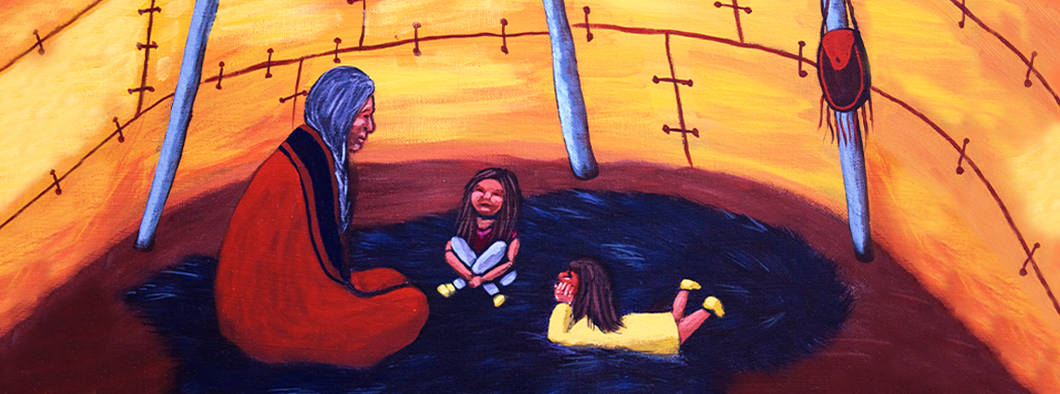A’tukwaqn
Our Stories Have Meaning
Ktatkuhkakonon wolokimqotol
Theme:
Ta’n Tel-mimajultimk, Mawo’ltimk aqq Kɨpnno’lewey
Economic, Social, and Political Life
Wetawsultiyeqpon, Mawehewakon naka Litposuwakon
Global Competencies
Critical Thinking and Problem Solving
- 1. Learners see patterns, make connections, and transfer learning from one situation to another, including real-world applications. (Activity 1)
Innovation, Creativity, and Entrepreneurship
- 1. Learners take risks in thinking and creating. (Activity 3)
- 2. Learners demonstrate initiative, imagination, creativity, spontaneity, and ingenuity in a range of creative processes. (Activity 3)
Learning to Learn/Self-Aware and Self-Directed
- 1. Learners take the past into account to understand the present and approach the future. (Activity 2)
Collaboration
- 1. Learners use a rich variety of technology appropriately to work with others. (Activity 2 and 3)
Communication
- 1. Learners communicate effectively and respectfully in oral and written forms of Mi’kmaw and Wolastoqey Lutawewakon.
Global Citizenship and Sustainability
- 1. Learners learn from and with diverse people and develop cross-cultural understanding. (Activity 2)
Curriculum Outcomes
Visual Arts
Specific Curriculum Outcomes
- 1. Paper manipulation — use a variety of paper manipulation techniques — understand that a two-dimensional surface can become three-dimensional by various additive techniques. (Activity 3)
- 2. Recognize size relationships (foreground, background, midground). (Activity 3)
- 3. Use a variety of sources for images such as fantasy, observation, and recording. (Activity 3)
- 4. Recognize that a response to art involves feelings, understandings, and knowledge. (Activity 3)
English Language Arts
General Curriculum Outcomes
- 1. Contribute to conversations and whole group discussions showing an awareness of when to speak and when to listen. (Activity 2)
- 3. Interact with sensitivity and respect, considering the situation, audience, and purpose. (Activity 2)
- 5. Engage in and respond to oral presentations (e.g.: retell a story). (Activity 2)
- 8. Reflect on the process of generating and responding to their own and other’s questions. (Activity 2)
- 5. Describe, share and discuss their personal reactions to texts. (Activity 2)
- 6. Experiment with different ways of making their own notes. (Activity 3)
Social Studies
Specific Curriculum Outcomes
Students will be able to:
- 4.2.1. Examine the stories of various explorers of land, ocean, space, and ideas (Klu’skap). (Activity 2)
- 4.2.3. Evaluate the impact of exploration over time. (Activity 2)
- 4.3.3. Examine the relationship between humans and the physical environment. (Activity 1)
Associated Text Materials
Grade 4 – Explorations
- p. 18 – What Stories of Exploration Are Missing?
- p. 58 – Putting It Together





